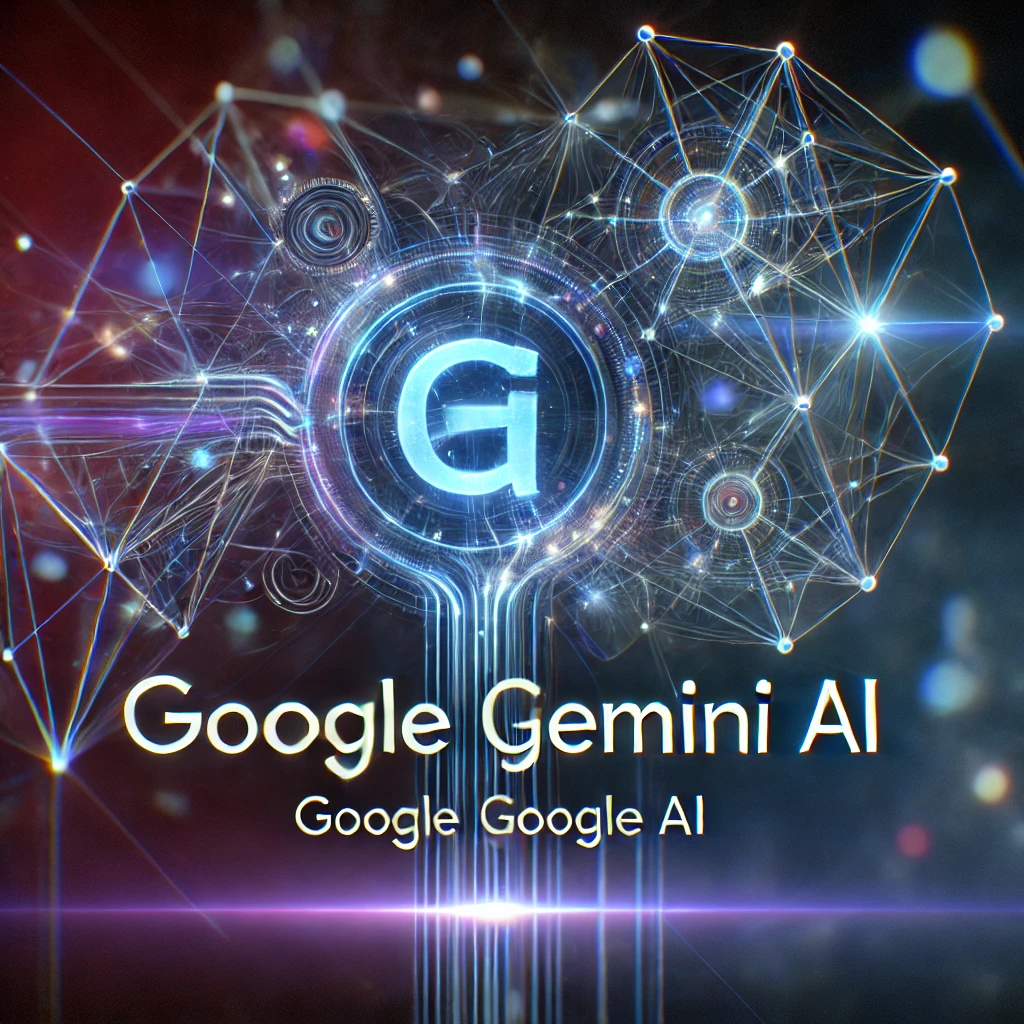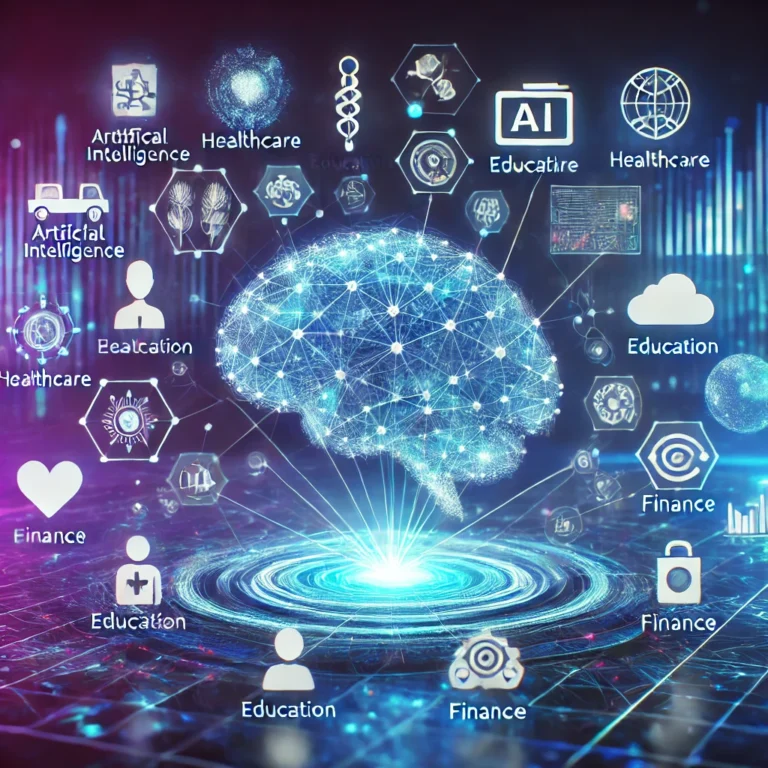Gemini and ChatGPT: A Comprehensive Comparison of AI Language Models
Introduction to AI Language Models
AI language models represent a significant advancement in the field of artificial intelligence, functioning as sophisticated systems designed to understand and generate human language. These models utilize vast datasets comprising text from various sources, allowing them to learn intricate patterns and context within the language. The primary purpose of AI language mo
dels is to facilitate human-computer interaction, enabling applications that range from conversational agents to content creation. This technological landscape has expanded rapidly, with numerous models being developed to meet diverse user needs.
At a fundamental level, AI language models operate through mechanisms such as machine learning and deep learning. They are trained on extensive corpuses, which help them predict and generate text based on input provided by users. This predictive capability varies in sophistication across different models, with some excelling at generating cohesive narratives while others may focus on specific tasks such as summarization or translation. As AI continues to evolve, new models emerge, striving to improve both the accuracy of language understanding and the naturalness of generated text.

The emergence of notable AI language models such as Gemini and ChatGPT has further propelled discussions around their capabilities and applications. Understanding the distinctions between these models is crucial for users seeking to leverage AI effectively. Each model brings unique strengths and focus areas depending on its underlying architecture and training methodologies. As these technologies continue to develop, it becomes increasingly important to stay informed about their capabilities and limitations, ensuring appropriate use in various contexts. This exploration into Gemini and ChatGPT will reveal the nuanced differences that set these models apart in the ever-evolving landscape of AI.
Overview of ChatGPT
ChatGPT is an advanced language model developed by OpenAI, renowned for its remarkable ability to generate human-like text based on the inputs it receives. It is built upon the GPT (Generative Pre-trained Transformer) architecture, which employs a deep learning methodology to generate coherent and contextually relevant responses. OpenAI’s focus on refining and expanding the capabilities of this technology has significantly advanced the field of natural language processing.
One of the key features of ChatGPT is its versatility in handling a wide range of topics. From engaging in casual conversations to providing detailed explanations on complex subjects, this model demonstrates its ability to adapt to the context of the interaction. It is equipped with extensive knowledge derived from a diverse dataset, enabling it to produce logical and informative responses. This broad scope of understanding makes it particularly valuable in applications across various sectors.
ChatGPT has found a substantial foothold in customer service, where businesses utilize the model to enhance user experiences by providing immediate and accurate responses to inquiries. It also plays a prominent role in the education sector, acting as an assistant in tutoring sessions or as a resource for students seeking clarification on difficult topics. Additionally, in the realm of creative writing, ChatGPT aids authors by generating ideas or drafting content, thereby acting as a creative partner that can inspire and augment the writing process.
Despite its numerous applications, ChatGPT has been met with mixed reactions. While many users appreciate its benefits in streamlining tasks, there are concerns regarding potential misuse and the ethical implications of deploying such technologies. Ensuring accurate and responsible use remains a topic of ongoing discussion among developers, users, and policymakers alike.

Introduction to Gemini
Gemini is an advanced AI language model developed by Google DeepMind, marking a significant evolution in artificial intelligence technology. Designed to enhance the interaction between humans and machines, Gemini integrates various innovative features that distinguish it from traditional AI language models. One of the key aspects of Gemini’s creation is its underlying technology, which revolves around a unified architecture capable of supporting multiple modalities. This architecture allows Gemini to process not only text but also visual inputs, setting the stage for versatile applications across diverse fields.
At the core of Gemini’s functionality is its ability to understand and generate human-like text with remarkable accuracy. It leverages state-of-the-art machine learning techniques and large-scale neural networks, which contribute to its proficiency in natural language processing tasks. Unlike conventional models that primarily focus on sequential text processing, Gemini employs a more comprehensive approach, integrating context from various forms of data simultaneously. This multimodal capability enables Gemini to deliver contextually relevant outputs, making interactions more engaging and informative.
Moreover, Gemini’s unique feature set includes adaptive learning mechanisms that enhance its performance over time. By analyzing user interactions and feedback, the model continuously refines its understanding of language and context, leading to improved communication efficiency. This is particularly valuable in environments where dynamic information is essential, such as customer service applications or interactive educational tools. In addition to its adaptive learning, Gemini emphasizes safety and ethical considerations by incorporating robust frameworks that guide its responses, minimizing potential biases and inaccuracies.
In essence, Gemini represents a breakthrough in AI language technology, combining sophisticated algorithms with an adaptive learning framework to offer an enriched user experience. Its multifaceted skill set positions it as a formidable contender within the growing landscape of AI applications, emphasizing not just functionality but also safety and ethical integrity.
Technical Comparisons: Architecture and Algorithms
Understanding the differences between Gemini and ChatGPT necessitates a close examination of their architectures, algorithms, and training datasets. Both models are pivotal in the field of artificial intelligence, but they utilize distinct methodologies that shape their capabilities and applications.
Gemini, developed by Google DeepMind, employs a multi-modal architecture designed to process different types of data, including text and images. Its foundation is grounded in transformer models, which are adept at handling sequential data inputs. One of the notable features of Gemini is its ability to integrate vision and language processing, thereby allowing it to perform complex tasks such as generating visual content based on textual descriptions. This is a significant evolution from traditional models and promotes versatility in varied applications.
Conversely, ChatGPT is based on OpenAI’s Generative Pre-trained Transformer (GPT) architecture. While it primarily focuses on text generation and contextual understanding, it showcases advancements in natural language processing. The training dataset for ChatGPT is extensive, involving a diverse range of internet texts, which facilitates it in producing human-like dialogue and responses. ChatGPT’s architecture emphasizes deep learning and fine-tuning, aiming for coherent and contextually relevant output based on user prompts.
In terms of algorithms, both models leverage deep learning, yet they diverge in their optimization techniques. Gemini utilizes advanced training methods that allow it to refine its multi-modal capabilities, leading to improved performance in integrated tasks. In contrast, ChatGPT’s algorithm excels in generating extensive conversational exchanges, ensuring engagement and relevance throughout interactions.
Ultimately, the architectural and algorithmic differences between Gemini and ChatGPT illustrate their unique strengths. These distinctions play a crucial role in their performance, adaptability, and the nature of outputs generated, highlighting each model’s particular design philosophy and intended use in artificial intelligence.

Performance Evaluation: Strengths and Weaknesses
The evaluation of performance between Gemini and ChatGPT highlights several distinguishing strengths and weaknesses inherent to each model. Gemini, designed with a focus on diverse linguistic capabilities, excels in generating contextually relevant content across multiple languages. Its advanced architecture allows it to manage complex conversational dynamics effectively. Users have reported a higher fluency and naturalness in Gemini’s responses, particularly in multilingual interactions, where nuances of language are crucial.
Conversely, ChatGPT, known for its robust conversational foundation, delivers exceptional performance in providing detailed answers to user inquiries. Its strength lies in context retention within longer dialogues, allowing for a more coherent flow of information. User feedback suggests that ChatGPT often generates more in-depth explanations when tackling intricate topics. However, it can sometimes struggle with maintaining relevancy in multi-turn conversations, potentially leading to slight deviations from the initial context.
When examining real-world application scenarios, benchmarks indicate that Gemini maintains a high accuracy rate in tasks requiring quick response times, while ChatGPT showcases its proficiency in scenarios that benefit from comprehensive analysis and elaboration. This distinction is particularly relevant for users needing swift answers versus those seeking thorough understanding.
However, both models exhibit weaknesses. For instance, Gemini may occasionally falter in providing detailed technical content, where ChatGPT’s extensive training database excels. Additionally, users have experienced instances where Gemini’s contextual understanding could be improved, especially in less common conversational scenarios. Acknowledging these strengths and weaknesses is essential for users to make informed decisions based on their specific needs and the context in which they operate.

Use Cases and Applications: Where They Shine
The growing dominance of artificial intelligence has led to the emergence of advanced models like Gemini and ChatGPT, each with its unique set of features and capabilities. Understanding the distinctions between these models is crucial for identifying their specific use cases and applications across various industries. Gemini, with its more sophisticated approach to data processing, excels in scenarios requiring complex analytical tasks. For example, in financial sectors, Gemini can predict market trends and perform risk assessments effectively, making it invaluable for investment firms and banks.
Conversely, ChatGPT has made a notable impact in areas that prioritize conversational interfaces. Its effectiveness in generating human-like text makes it a suitable choice for customer service applications, where quick responses and personalized interactions are vital. Many businesses have adopted ChatGPT as a virtual assistant, particularly in the e-commerce industry, to enhance customer engagement and streamline sales processes. Furthermore, educational institutions have begun integrating ChatGPT into their platforms to provide tutoring and support for students, illustrating its versatility in the learning environment.
In the realm of content creation, both Gemini and ChatGPT have their strengths. Gemini can analyze large datasets to guide content strategies, ensuring that marketing efforts are backed by data-driven insights. Meanwhile, ChatGPT stands out in generating creative writing, helping writers and marketers produce engaging content that captures the audience’s attention. This ability to generate contextually relevant text makes ChatGPT a powerful tool for social media management and audience engagement.
Ultimately, the effectiveness of Gemini and ChatGPT varies depending on the specific needs of industries. By evaluating their strengths, organizations can select the appropriate model to address their challenges, thereby maximizing the potential for innovation and efficiency.
User Experience: Interaction and Usability
When it comes to user experience, both Gemini and ChatGPT present distinct interfaces that cater to varying user preferences and requirements. Gemini is designed with a streamlined interface, prioritizing cross-device usage and intuitive navigation. Users have reported that the layout is visually appealing and easy to understand, allowing for quick engagement without overwhelming options. This approach is particularly beneficial for new users who may find language models complex; thus, an accessible design fosters a positive first interaction.
ChatGPT, on the other hand, adopts a slightly different approach, often providing a more conversational interface reflecting its roots in providing chat-like experiences. Users appreciate the familiar messaging format, which enables them to communicate in a more dynamic and engaging manner. The interface is tailored to facilitate continuous dialogue, making it easier for users to maintain context throughout interactions. However, some users noted occasional challenges in retrieving information from earlier conversation segments, which could detract from overall usability.
Response quality significantly impacts user satisfaction for both platforms. Gemini users frequently highlight the model’s ability to produce concise and contextually relevant answers, lending itself to professional applications where precision is crucial. Conversely, ChatGPT is celebrated for its creativity and versatility, often generating more expansive and nuanced responses. While some users prefer the constructed, factual nature of Gemini’s outputs, others find ChatGPT’s conversational style more engaging and effective for brainstorming or informal inquiries.
User feedback further illustrates these distinctions, with Gemini users expressing satisfaction with clarity and expert-level responses, while ChatGPT users often celebrate its ability to generate human-like text with depth and a personal touch. This information on user experience suggests that while both models are highly effective, their differing designs and response tendencies cater to diverse user needs.
Future Developments and Trends in AI Language Models
The landscape of artificial intelligence and language models is rapidly evolving, with both Gemini and ChatGPT at the forefront of this transformation. As we look ahead, it is essential to contemplate potential advancements and the implications they may hold for users and developers alike. One prominent trend is the increasing emphasis on enhancing contextual understanding. As user interactions become more complex and diverse, both Gemini and ChatGPT must evolve to better interpret and generate language that aligns with user intent.
Furthermore, the integration of multimodal capabilities is likely to shape future developments. This aspect refers to the ability of AI models to process and generate not only text but also images, sounds, and videos. Such advancements could enable richer, more interactive experiences for users, providing a more holistic approach to information retrieval and conversation. Gemini and ChatGPT may leverage these capabilities to cater to a broader spectrum of user preferences, thereby enhancing user engagement and satisfaction.
Another significant trend involves the ethical deployment of AI language models. As awareness around data privacy and responsible AI usage increases, future iterations of Gemini and ChatGPT are expected to incorporate more robust ethical frameworks. This focus could lead to improved transparency in how these models operate, ensuring that users are informed about data handling and content generation processes.
Moreover, the demand for personalized AI experiences is on the rise. Users are beginning to seek language models that can adapt their responses based on individual preferences and prior interactions. Gemini and ChatGPT are likely to invest in machine learning techniques that harness user data to deliver tailored experiences. This personalization could enhance the overall relevance of the interactions and establish deeper connections between users and AI.
In conclusion, the future of AI language models, particularly Gemini and ChatGPT, promises significant advancements. From contextual understanding and multimodal capacities to ethical considerations and personalized experiences, the growing trends suggest that these models will continue evolving to meet the dynamic needs of users. The ongoing research and development efforts will likely yield tools that are not only more effective but also align with the expectations of a diverse user base.

Conclusion: Key Takeaways from the Comparison
In the exploration of Gemini and ChatGPT, several key differences emerge that potential users should be aware of. Both models, developed for distinct purposes, showcase unique attributes that cater to varying needs. Gemini, often praised for its multifaceted capabilities, integrates advanced features that make it suitable for diverse applications. It shines in contexts requiring sophisticated contextual understanding and nuanced responses, providing an edge in environments where a multifarious approach to language is essential.
On the other hand, ChatGPT is widely recognized for its conversational fluency and user-friendly interface, catering primarily to interactive dialogues. Its strength lies in generating coherent and relevant responses, making it a preferred option for users seeking engaging conversation. The model excels in maintaining context within a dialogue, ensuring a seamless interaction that appeals to both casual users and professionals alike.
When weighing the two options, potential users should consider their specific requirements. Gemini is highly effective in scenarios where depth, precision, and creativity are paramount. In contrast, ChatGPT may be more suited for tasks that prioritize conversational quality and straightforward engagement. Furthermore, the technical architecture behind each model influences their performance in terms of speed, adaptability, and deployment capabilities.
Ultimately, the choice between Gemini and ChatGPT hinges on the intended use case. Evaluating the strengths and functionalities of each model will facilitate an informed decision that aligns with user needs. A careful assessment of intended use, technical specifications, and overall interaction goals will ensure that users select the most appropriate model for their tasks. Understanding these key differences empowers users to maximize the efficacy of the language model they choose to utilize.
Both Gemini and ChatGPT cater to different needs:
- Gemini: Best for data-rich applications and multimodal tasks.
- ChatGPT: Ideal for conversational AI and detailed content generation.
By understanding these core differences, users can select the best model for their needs, whether in business, education, finance, or creative fields.
For a deeper dive into AI language models, check out OpenAI’s research and Google DeepMind’s AI advancements.
Foundation Models article:
To gain a deeper understanding of the core technologies behind AI models like Gemini and ChatGPT, explore our Foundation Models article. This guide delves into the architecture, training methodologies, and real-world applications of these powerful AI systems, helping you grasp how they shape the future of artificial intelligence.

What is the main difference between Gemini and ChatGPT?
Gemini, developed by Google DeepMind, is a multimodal AI model that can process both text and visual inputs, while ChatGPT, developed by OpenAI, is primarily a text-based conversational AI designed for generating human-like dialogue and content.
Which model is better for general conversation?
ChatGPT is generally better for conversational AI, as it is optimized for engaging, dynamic, and contextually rich interactions. It excels in chat-based applications such as customer support and personal assistance.
How does Gemini handle multimodal inputs?
Gemini can process and generate responses based on a combination of text and images. This makes it useful for applications that require a deeper understanding of both textual and visual data, such as image captioning or data interpretation.
Which AI model is more accurate?
Both models have high accuracy in their respective fields. Gemini excels in complex analytical tasks and multimodal understanding, while ChatGPT performs exceptionally well in generating detailed text responses and maintaining conversation flow.
Can Gemini and ChatGPT be used for professional applications?
Yes, both models have professional applications:
Gemini is well-suited for research, financial analysis, and data-driven decision-making.
ChatGPT is widely used in customer service, content creation, and educational tutoring.
Is Gemini or ChatGPT better for content creation?
ChatGPT is generally better for creative writing, storytelling, and blog content generation due to its ability to produce coherent, engaging narratives. However, Gemini can assist with data-driven content creation, ensuring factual accuracy and structured analysis.
Which AI model is more customizable?
ChatGPT offers fine-tuning options and API integrations for businesses looking to tailor responses to specific needs. Gemini also provides customization features but is more focused on data-driven adaptability.
Are there ethical concerns with using these AI models?
Yes, ethical concerns include misinformation, biases in training data, and responsible AI usage. Both Google DeepMind and OpenAI are actively working on improving transparency and reducing biases in their models.
Which AI model is faster?
Gemini tends to be optimized for speed in multimodal tasks, while ChatGPT is highly efficient in text-based interactions. The speed difference depends on the complexity of the query.
How do I choose between Gemini and ChatGPT?
Choose Gemini if you need:
Advanced multimodal capabilities (text + images)
Data analysis and technical processing
AI-assisted research and decision-making
Choose ChatGPT if you need:
Conversational AI for customer support or chatbots
Creative writing and content generation
A user-friendly AI for everyday interactions






